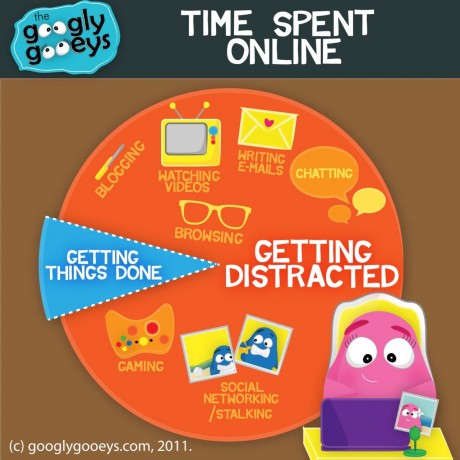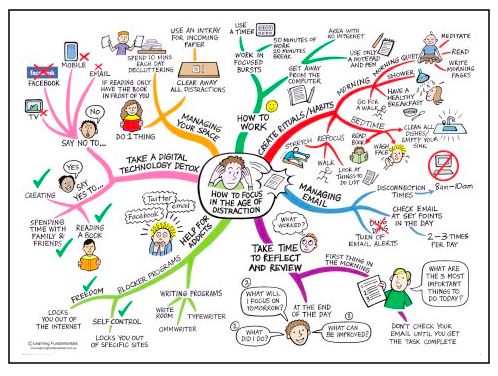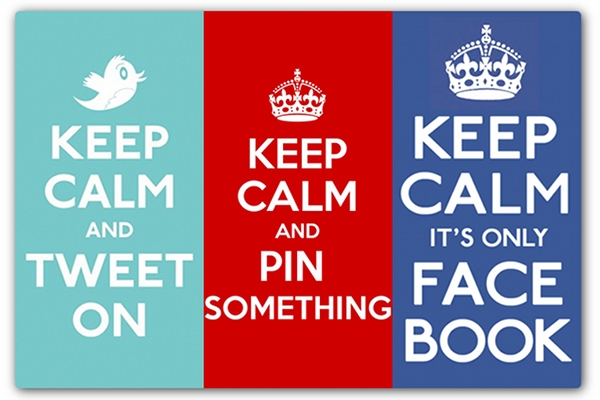Photo by BirgerKing
Take a guess. Be honest. How long can you pay attention when working online before your mind wanders? According to the Statistic Brain site list of attention span stats, in 2000 we had a 12 second attention span compared with an 8 second attention in 2013. To put this context, a gold fish has an attention span of 9 seconds! Attention span is the amount of concentrated time on a task without becoming distracted. Most educators and psychologists agree that the ability to focus attention on a task is crucial for the achievement of one’s goals. It’s no surprise attention spans have been decreasing over the past decade with the increase in external stimulation – social media, mobile phones, and the flood of online information.
What’s making our human brains like those of gold fish? There is also so much information online that it is now measured in exabytes, which is equal to a quintillion bytes. The creation and sharing of content on social media and social networks is accelerating the problem. This infographic summarizes how much information is generated online by users in a minute. For example, Facebook users share 684,478 pieces of content in a minute. When we work online, especially social, we have to fight this jungle of unstructured user generated information, content, and data and build up our focusing skills.
We can’t simply blame the problem on information overload, it is mindless consumption of information. We all need to go on an Information Diet as Clay Johnson described it in his book with the same title. That means we must practice mindful consumption and sharing of information. And, we have to understand and apply a little brain science.
According to a Daniel J. Levitin, professor and researcher at McGill University and author of “The Organized Mind: Thinking Straight in the Age of Information Overload“, human brains alternate between two modes of consciousness: (1) the task-positive network, which helps you get things done, and (2) the task-negative network, which functions when you daydream or let your mind wander. Balancing between the two is essential to completing tasks and coming up with creative solutions to problems. When you’re constantly jumping between Facebook, email and texts, however, your brain has to divide its limited resources. This can destruct your attention span and your ability to make distinctions between what is important and what isn’t. In short, you don’t spend enough time in either mode for your brain to be effective.

We all rely on the Internet to get a lot of our work done, but we are working on the best ever invention for procrastination because it can quickly shift our brains into task negative territory (if we let it). Come on, you know what I’m talking about. That thought that pops into your head, “Before I write that report, I’m just going to check my email or Facebook.” Careful, it can become an endless loop. And even worse, checking your email creates a flight or fight response – what Linda Stone has coined as “Email Apnea” Next time you check your email (and don’t do before your finish reading this post), notice that you are holding your breath – which will make your body gasp and fight for air. So, if you are toggling in short bursts between trying to accomplish a task that requires concentration and checking your email (or Facebook), you are doing yourself a disservice.
Our mobile phones make it worse, because now we can check into the Internet, anywhere and anytime. According to this recent Harris Poll, nearly 60% respondents said they don’t go an hour without checking their phone. Younger folks were the most addicted: 63% of women and 73% of men ages 18-34 say they don’t go an hour without checking their phones. Our connection never sleeps. 54% said they check their phones while lying in bed: before they go to sleep, after they wake up, even in the middle of the night. We need access everywhere. Nearly 40% admit to checking their phone while on the toilet.
Learning how to train our attention is an essential nonprofit work place skill, especially for emerging leaders! And, self-knowledge is the first step. I’ve developed this 10 question assessment that can help you reflect on whether you are developing good focus habits or whether you are becoming an ADHD goldfish!
Attention training is technique from Howard Rheingold, author of NetSmart. It is a simple, elegant way to train your attention while working online to keep mindful how you are spending your time and when your mind wanders. As he says in his book, your attention is one of your most available assets. Yet, we often squander it by not being mindful. Mindful online is defined as not just going into auto pilot to update your FB status or scan your Twitter stream but to consciously think about all aspects of your digital actions. Rheingold’s low-tech technique, a post-it note on your computer monitor, is a simple and elegant way to help train your attention. (I’ve used this technique, but have also extended it by setting my iPhone alarm every 60 minutes to remind myself about my goals and if I’m on task.)

This mindmap is one of the most, practical set of tips for learning to manage distraction. I discovered it a few years ago and immediately printed it out and have it taped to my wall. I then set out to practice these techniques, one at time, for a month at time until I had successfully retrained my brain. I think I can out focus a gold fish now, although there are occasional lapses.
According to Levitin’s book,”The Organized Mind: Thinking Straight in the Age of Information Overload“, brain science dictates that you should chunk your day into project periods. Your social networking should be done during a designated time, not as constant short dips in and out throughout your day. He also recommends that email should be time boxed or done a designated intervals. An email that you know is sitting there, unread, robs your attention as your brain keeps thinking about it, distracting you from what you’re doing. It is an irresistible siren.
Levitin also says that if you give up multitasking and immerse yourself in a single task for sustained periods of a half hour or hour, you’ll get more creative. Several studies have shown that a walk in nature acts as a neural reset button, and provides much needed perspective on what you’re doing. Which one of my favorite attention focusing techniques is to shut off the screen and take a walk.
But what if there was a way to use online tools, mobile apps, and software that helped lengthen our attention spans and replace information overload with a sense of mindfulness?
This question has spawned is a new category of online tools and apps– known by a number of labels such as “conscious computing,” “calming technology,” or contemplative computing.” These apps can transform our mobile phones, tablets, and computers from agents of distraction into agents of mindfulness. In his book, The Distraction Addiction: Getting the Information You Need and the Communication You Want, Without Enraging Your Family, Annoying Your Colleagues, and Destroying Your Soul, Alex Soojung-Kim Pang argues that taking a “digital sabbath” doesn’t solve the problem and while a good thing, isn’t enough. It may sound counter-intuitive but we need to use technology.
I don’t think that tools alone can do it alone. I think we need also what Howard Rheingold calls “Infotention Skills or training our attention and developing productivity habits in a networked age should go hand-in-hand with the use of these tools. Here are some of the tools that can help make better habits or break bad ones. Here’s a post I wrote that pairs apps with good attention focusing techniques.

Tips for Squeezing Social Media Into Your Day Without Getting Overwhelmed
People who are doing social media for more than 35% of their job need a certain set of tools and tips to manage their time. But, more and more smart nonprofits are enlisting their staff members as champions online and are using their personal brands and networks in service of the organization’s goals. These staff members most likely do not as much dedicated time to spend on social media – so there is the potential of getting overwhelmed. So, here are a few tips for those find they need to “squeeze in” social:
- Make social media part of your morning work routine for 15-20 minutes
- Take social media breaks after completing higher concentration tasks
- Keep an eye out for photos, especially useful for Twitter
- Do your “engagement” activities on your phone while taking a walk after lunch
- Set reminders on your phone or calendar to check social channels and make it a habit
- Block out some time to schedule your tweets or updates over the week, using scheduling tools
- Don’t succumb to fear of missing out or myth of in-box zero or being caught up
- Curate information on social that helps you build expertise or knowledge for a presentation or work related tasks
- Check social channels while you wait in lines or in between meetings
- Learn how to scan and then go deep
How you manage your attention and time online when social media isn’t a full-time job for you? What works?
